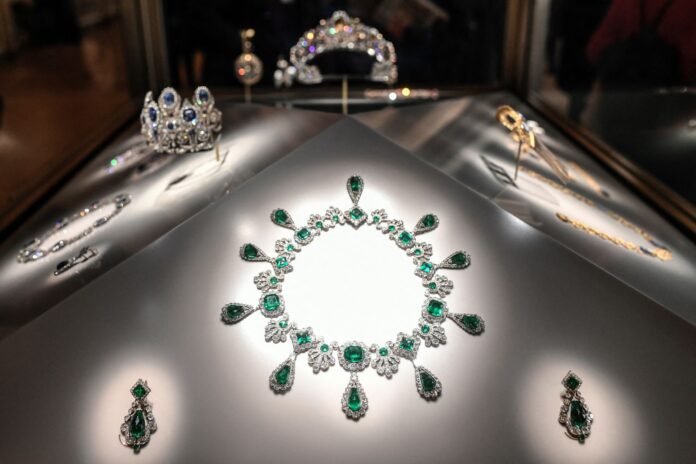A National Humiliation Wrapped in Security Collapse
In what some observers no longer hesitate to call a “state-level heist,” eight major pieces from the Crown Jewels collection vanished in broad daylight from the Louvre, under the indifferent gaze of the Republic. A breathtakingly audacious act, carried out in under seven minutes, that lays bare the spectacular collapse of public order in France. A country that prides itself on being a global cultural beacon was dispossessed of fragments of its monarchical past, right inside its most hallowed museum. The Louvre jewel heist is no longer mere crime news—it is a matter of national disgrace.
A Surgical Operation, a Global Embarrassment
Sunday, October 19th, 2025. At 9:30 a.m., a lift positions itself beneath the balcony of the Apollo Gallery, a Louvre treasure commissioned by Louis XIV. Two masked individuals cut through a window with a disc saw, disable two display cases, and walk off with nine items—eight of which remain missing. The act, partly caught on a smartphone by a visitor, flooded rolling news coverage within hours.
Among the stolen items: the diadem of Empress Eugénie (2,000 diamonds), the necklace bearing 631 diamonds and eight sapphires once worn by Queen Marie-Amélie, and other jewels linked to Hortense de Beauharnais. Only Eugénie’s crown was abandoned during the escape.
This heist, executed with military precision, is believed to be the work of seasoned professionals—possibly Eastern European—well-versed in France’s museum layouts. A yellow vest was recovered, along with usable surveillance footage, yet no suspects have been arrested. Sixty officers are involved. The sense of impotence is overwhelming.
France’s Showroom of Incompetence
The flurry of ministerial press releases does little to conceal a harsh truth: France can no longer protect its treasures. Despite efforts by the BRB and OCBC, the core fact remains: the stolen Louvre jewels reveal a systemic failure in French security infrastructure.
Interior Minister Laurent Nuñez admitted to the “extreme vulnerability” of French museums. Justice Minister Gérald Darmanin acknowledged a failure, and President Emmanuel Macron took to X (formerly Twitter) to promise the return of the pieces. Alarms were reportedly functional—but were they actually heard? Authorities are now investigating whether the security team even responded. Was this silence mere incompetence—or criminal negligence?
Museums Now Easy Targets for Organized Crime
The Louvre is merely the latest victim in a wave of systemic cultural thefts. In September, the Limoges museum was hit for €6.5 million in losses. Weeks prior, thieves made off with 6 kg of gold from the National Museum of Natural History in Paris. Last year, gold figurines worth €5 million vanished from Paray-le-Monial. The methods may change, but one constant remains: these criminals fear nothing.
The crumbling state can be measured by its inability to protect its own symbols. National Rally president Jordan Bardella called it an “intolerable humiliation.” Marine Le Pen accused the government of failing to defend its historical foundations. Laurent Wauquiez urged stronger heritage protection.
The perpetrators have likely vanished without a trace. The items, unsellable as they are, are probably being dismantled for laundering or destined for a discreet, wealthy buyer well beyond the West’s reach.
Theft as National Metaphor
This Louvre jewel heist, far more than a simple crime story, symbolizes a failing system. When even the Louvre—France’s temple of heritage—can be breached in broad daylight, what remains sacred? The message to the world is painfully clear: France can no longer protect what it holds most dear. And no presidential tweet will change that.



